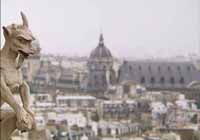 |
 |
 |
| Mary Alice White, a researcher at Columbia Teacher's College has found that young people learn more than half of what they know from visual information, but few schools have an explicit curriculum to show students how to think critically about visual data.
In a society where powerful interests employ visual data to persuade (what Alvin Toffler calls "info-tactics") schools must show students how to look beyond the surface to understand deeper levels of meaning and tactics employed to sway their thinking. There is a danger that these images will serve as decoration rather than information unless we show them how to interpret (make meaning of) the data. The Library of Congress is busily digitizing its collections so that you and your students can explore great pictures and documents from our nation's past. One collection of photographs from the turn of the century, the Detroit Publishing Collection, supports powerful inquiry with a search engine.
2. Once you find the picture, enlarge it by clicking on the thumbnail and then point your cursor into the middle of the photograph. Hold your mouse button down or right mouseclick until a menu appears which includes the option "Copy." Select the image, and then paste the photograph into a word processing file. 3. Now join with your partner to probe beyond the obvious and infer psychological content. Who is the leader of this group? Write down your choice and then make a list of at least 8 reasons why you selected that one person over the others. Make your reasons as specific as possible, supplying the visual data, details and evidence to build your case. 4. Having many great pictures is not especially valuable unless students can interpret the information. In your learning log, write your thoughts about the following:
Explore other collections in The Library of Congress
Other visual literacy resources:
Mexican Museums (in Spanish) Diego Rivera - Mexican Muralist - Project Pathfinder
|